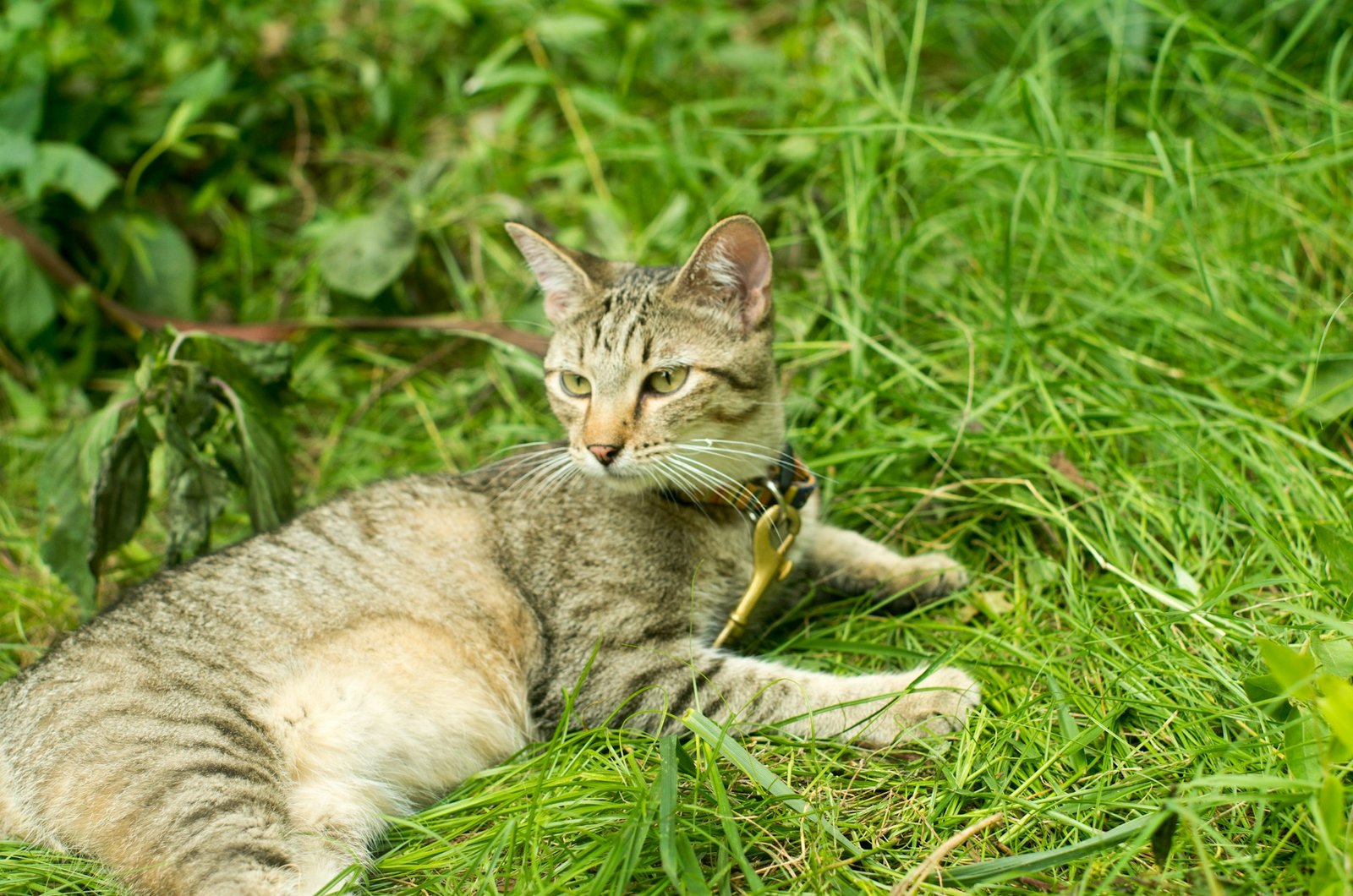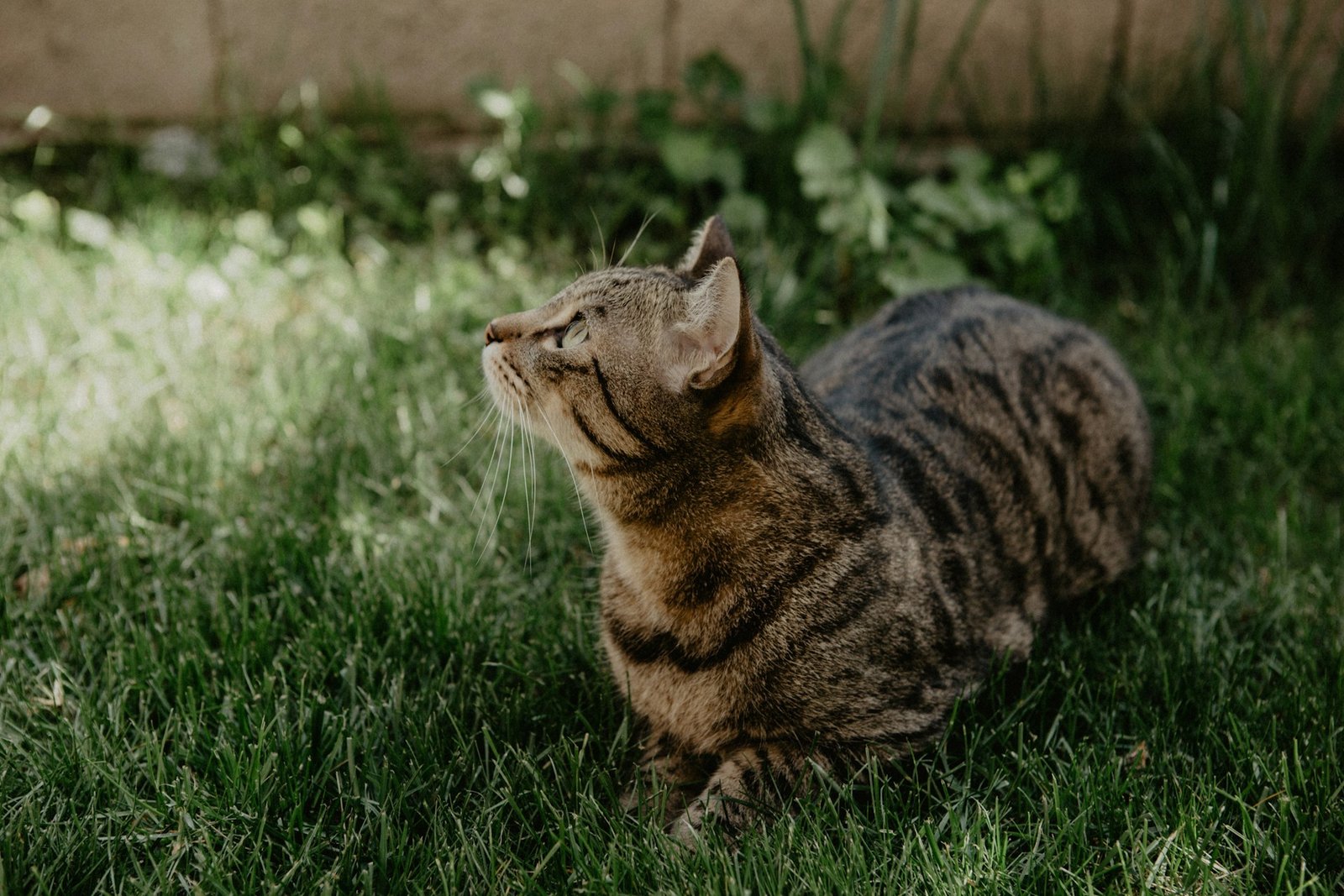Hey, so you’re thinking about putting a leash on your cat? Love the confidence. Cats are not exactly known for doing what we ask, but hey, miracles happen.
With the right approach—and maybe some bribes—you can actually make leash training work. Trust me, it’s possible. Not easy, but possible.
Why bother, though? Well, besides the fact that it makes you look super cool walking your cat like a boss, there are some real benefits. Let’s break it down.
Why Even Try This?
Not everyone appreciates leash training, but it actually comes with a lot of advantages.
Here’s why you should try it!
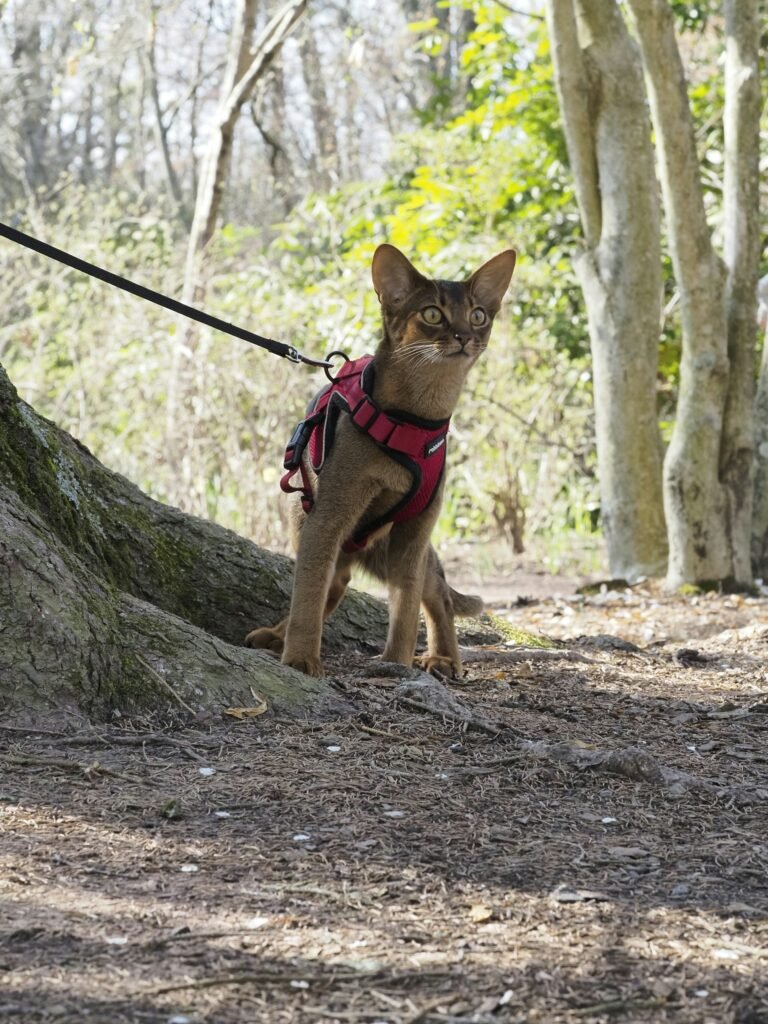
Enrichment and Safety
Your cat’s curious, right? They love watching the world go by from the window. Leash training can let them explore without all the risks. Coyotes, cars, cranky neighbors? No thanks.
Mental and Physical Stimulation
Plus, it’s great exercise. Ever notice how cats just loaf around all day like professional nappers? A little fresh air and walking is good for them. It’s also fantastic mental stimulation. They get to sniff everything, stalk imaginary prey, and live their little adventurer dreams.
Bonding and Fun
Also, it’s fun. For you, for them, maybe even for your neighbors who will 100% stop and stare. Bonding time with your cat + a side of laughs = win-win.
Before we move to the do’s and dont’s, make sure to watch the video below.
The Do’s
Get the Right Stuff First
No, you can’t just grab a dog collar and call it a day. Cats are… special. They need a harness that fits just right—not too tight, not loose enough for them to wiggle out of. Look for one that’s lightweight and adjustable. It’s a harness, not a medieval suit of armor.
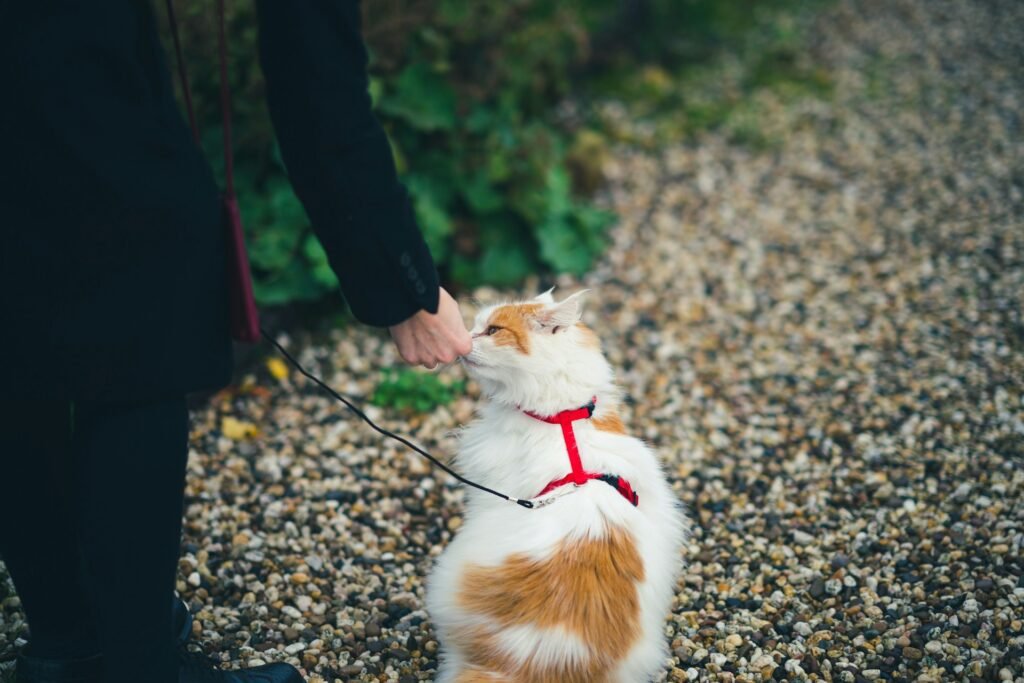
Introduce the Harness Like It’s a Fancy Gift
Cats are drama queens. Throw a harness on them out of nowhere, and you’re officially their nemesis. Instead, leave the harness somewhere they chill, so they can sniff it. Maybe toss a treat on it. Get them curious, not suspicious.
Once they’re cool with that, put it on them gently—but don’t secure it yet. Reward them every time they stay calm. Make it a positive experience, or they’ll remember. And cats never forget.
Practice Indoors First
Once the harness is secure, don’t go bolting out the door like you’re both ready for an adventure. Nope. Baby steps. Let them wear the harness indoors while dragging the leash around. Then, hold the leash and encourage them to follow you with treats or toys. If they flop over like they’ve lost the will to live, that’s normal. Cats and harnesses take time.
Choose a Chill Spot for Their First Walk
Don’t toss them into the chaos of a dog park or a busy street. Find a quiet spot—like your backyard or an enclosed garden. Low-key is the way to go. Their first outdoor experience should be calm, not a sensory overload.
Let Them Lead
Cats aren’t dogs. Don’t expect them to heel or power-walk next to you. Let your cat explore at their own pace, and follow where they lead. This is their adventure; you’re just along for the ride. Keep the leash slack and stay close in case they get spooked.
Treats, Treats, Treats
This cannot be stressed enough. Treats are everything. Bring their favorites to reward calm behavior and walking in the right direction. It’s bribery, sure, but it works.
The Don’ts
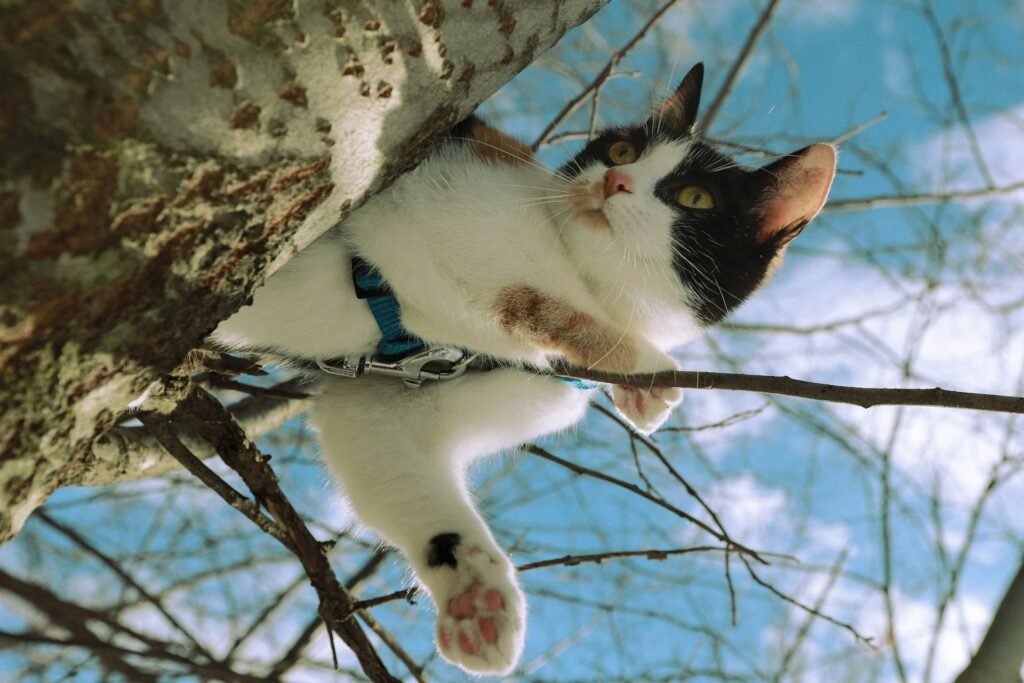
Don’t Rush
Leash training isn’t a race. If you skip steps or try to rush your cat outside before they’re ready, you’ll just end up with a stressed-out kitty. Slow and steady wins the leash-training game.
Don’t Use a Collar
Cats have delicate necks. A collar and leash combo is not only uncomfortable—it’s dangerous. Stick to a harness designed for cats.
Don’t Force Them
If your cat isn’t feeling it, don’t force the issue. Some cats just aren’t into leash walking, and that’s okay. Respect their boundaries and try other ways to enrich their lives.
Don’t Pull or Drag
If your cat decides to sit down or freeze, don’t tug on the leash like you’re trying to tow a car. Be patient, wait them out, and gently encourage them with treats or a soothing voice.
Don’t Ignore Their Body Language
Cats are great at hiding their feelings, but their body language gives away everything. If their ears are flat, tail puffed, or they’re crouching low, they’re scared or uncomfortable. Take them back inside and try again another day.
Final Thoughts
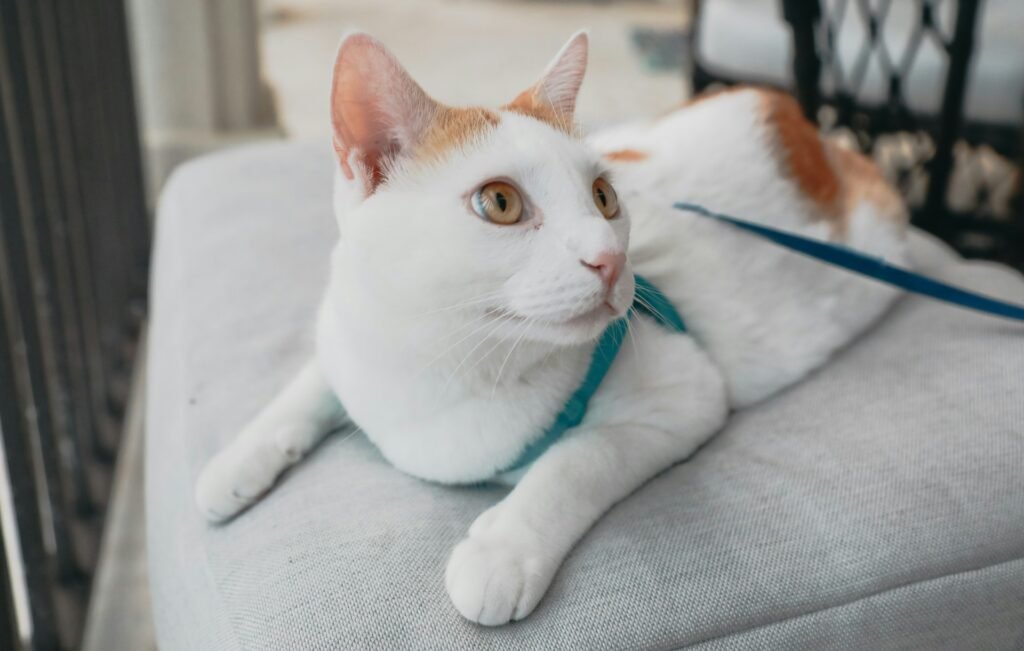
Leash training your cat takes patience, a bit of humor, and a lot of treats. It’s not something all cats will enjoy, and that’s okay. For those that do, it can open up a whole new world of adventure and bonding.
The key is to go at their pace and always make it fun and positive. Whether your cat ends up exploring the great outdoors or simply rocks a harness indoors for giggles, the effort you put in strengthens your connection.
So grab that harness, pack some snacks, and give it a shot. You’ve got this!




